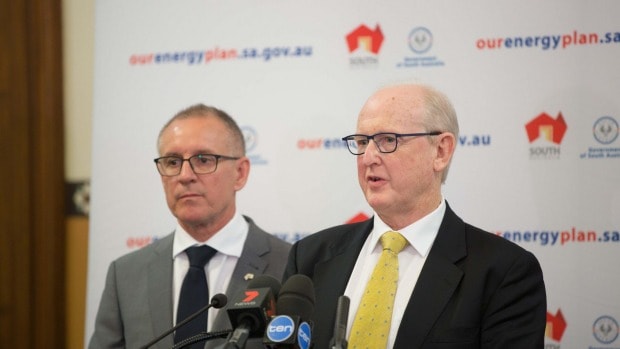Industry analysts have advised that renewable energy in South Australia will replace gas as SA’s primary source of electricity within eight years. A report by Wood Mackenzie says that by 2025 battery storage will be cheaper than OCGT (open-cycle gas turbine) plants.
The future of renewable energy in South Australia
Renewable energy has been a huge topic of conversation in South Australia lately, especially after the Tesla South Australia battery partnership was announced earlier this month. Despite having a torrid time of it last year with widespread blackouts, premier Jay Weatherill has been forging ahead with his vision of a state primarily powered by renewables, and has been doing a great job. The Lyon Group recently announced a $1 billion battery and solar farm for SA and there are myriad others on the books.

The report, created by Wood Mackenzie and Greentech Media Research, forecast that battery costs will decrease by 50% by 2025. Bikal Pokharel, an analyst for Wood Mackenzie, noted that SA’s peak loads are currently managed by the OCGT plants, but this will change in the future. By 2025, Pokarel says, “battery storage would be cheaper than OCGTs in managing peak loads … OCGTs would then be relegated as emergency back-ups.”
“If current cost trends continue, 2025 could very well see renewables and batteries overtake rival generating alternatives in dominating South Australia’s power system, and the region could become a leading case study on managing a power system in transition for other mature markets to follow,” Pokharel said.
If the renewables projects currently on the books proceed, by 2025 a whopping 67% of South Australia’s energy requirements will be met by renewables. Since solar and wind power isn’t as reliable as traditional methods, ‘dispatchable power’ will be required to cover base loads – and according to Pokharel, “Current gas supply and transportation terms cannot meet this type of demand profile”.
Funnily enough, expensive diesel generators may become a viable option since they (and their fuel) are simple to store and can be set up quickly. In order to use gas as dispatchable power, changes must be made to the operation of the market – involving offering subsidies for “must-run” gas units or standing capacity.
It’s great to see South Australia leading the way with their charge towards a renewable heavy energy economy and we’re excited to see where this leads in the future.

